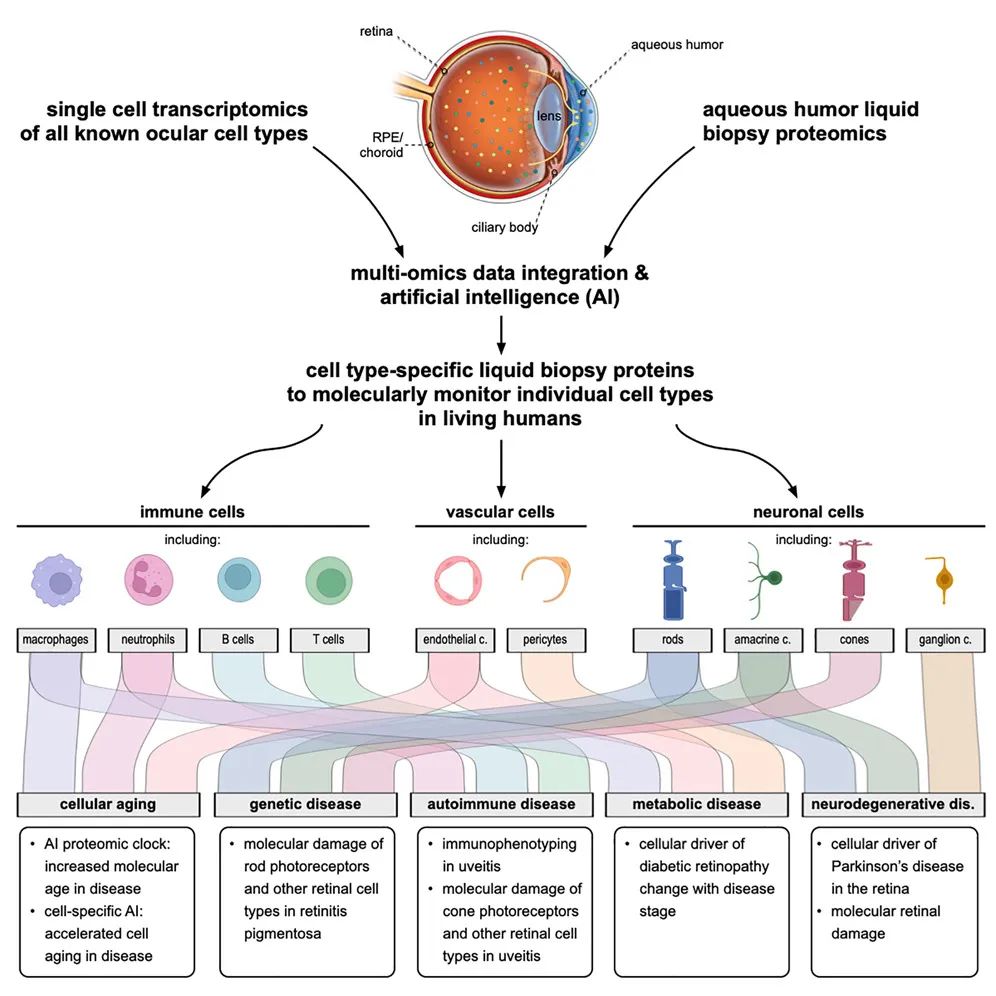Are your eyes aging prematurely?
2023-11-22

When does aging begin? The eyes provide an important viewing window.
You may first think of skin changes around the eyes such as dark circles, eye bags, and crow's feet. You may also notice conditions such as dryness and decreased vision. However, there are many more aging problems that can be reflected in the eyes.
Recently, a research team led by Stanford University collected fluids from human eyes and analyzed nearly 6,000 proteins in them. They found that some proteins can be used to predict the degree of aging and the occurrence of certain diseases. Using artificial intelligence (AI), they also used the data to create a "proteomic clock" that assesses eye aging, showing how diseases such as diabetic retinopathy accelerate aging in specific cells, revealing insights for the treatment of multiple eye diseases. Potential new targets. The research results were published in the top academic journal Cell.
According to the researchers, due to the special characteristics of the eye - like the brain, it cannot regenerate, it is usually impossible for doctors to take out a piece of tissue from the patient's eye for biopsy. So, they thought of liquid biopsy as an alternative.
To do this, the researchers collected the regenerative aqueous humor in the eyes of patients undergoing eye surgery. Proteomics technology was used to identify 5,953 protein components. According to reports, the scale of this analysis is 10 times the number of proteins characterized in similar studies. The researchers then created a software tool (called TEMPO) that used existing eye single-cell transcriptomics data to trace the type of cell from which each protein originated.
Multi-omics data analysis combined with AI algorithms has identified hundreds of proteins that can be used as molecular markers to monitor various types of cells in eye tissue, including various immune cells, specific neurons in the retina, cells that make up blood vessels, and more..

Changes in these molecules can provide much information about aging and disease.
They analyzed aqueous humor from patients with three common eye diseases. Some suffer from diabetic retinopathy, which causes blood components to leak into the retina due to damage to the retinal blood vessel walls, which may lead to blindness in severe cases; some suffer from retinitis pigmentosa, which causes the decomposition of photosensitive cells at the back of the eye; and some suffer from uveitis. , a common type of eye inflammation.
The researchers first built an AI machine learning model based on data from 46 healthy volunteers. This model accurately predicts the age of healthy eyes based on 26 of nearly 6,000 proteins. By comparing aqueous humor data from patients with eye disease to healthy eyes, the model can show how old the eye actually is at different stages of the disease.
The paper shows that the eyes of patients with early-stage diabetic retinopathy age 12 years early; as the disease progresses, the eyes of patients with late-stage diabetic retinopathy age 31 years early. Retinitis pigmentosa and uveitis also make patients' eyes age on average 16 and 29 years respectively.
These findings provide a lot of new information for clinical treatment. For example, the cells responsible for indicating age and aging are different in different eye diseases, but some cells that are closely related to the disease have not been taken seriously in current treatments. Diabetes drugs, for example, typically target blood vessel cells because they leak as the disease progresses, but this study found large changes in the proteins of macrophages, a type of immune cell, from healthy to advanced diabetic retinopathy.
Some cells also show accelerated aging before symptoms of disease appear. This means that if you target the molecular pathways of these cells for treatment, you may be able to nip the disease in the bud and avoid further progression of the disease.
Even more surprising, in addition to the eye disease, the researchers also detected several Parkinson's disease-related proteins in the aqueous humor, which in the past could only be identified from autopsy results after the patient died. The new discovery means that it may be possible to screen for Parkinson's disease through eye liquid biopsy in the future, helping with early diagnosis and treatment.
In addition, the research team pointed out that this method of liquid biopsy combined with artificial intelligence can also be applied to other organ systems, such as bile and joint synovial fluid, to evaluate the actual aging degree of different tissues and their relationship with diseases through molecular diagnosis, and to discover new aging Mechanisms and disease therapeutic targets.


